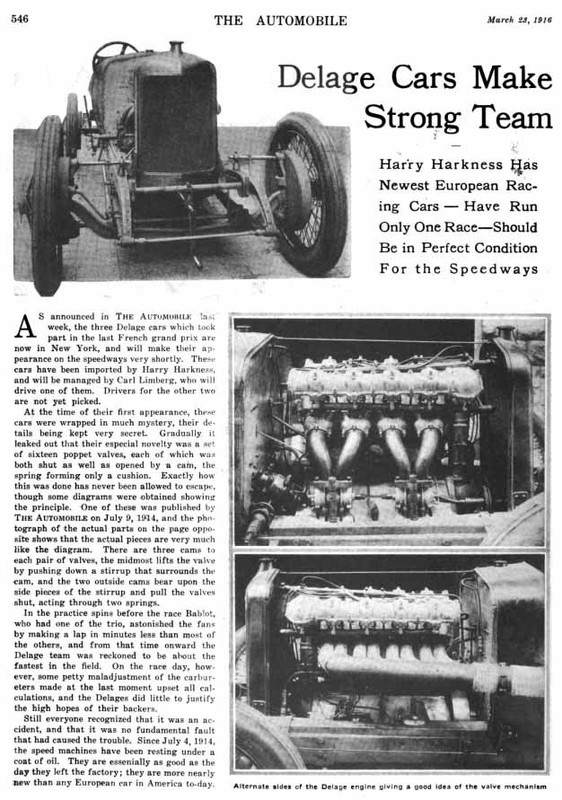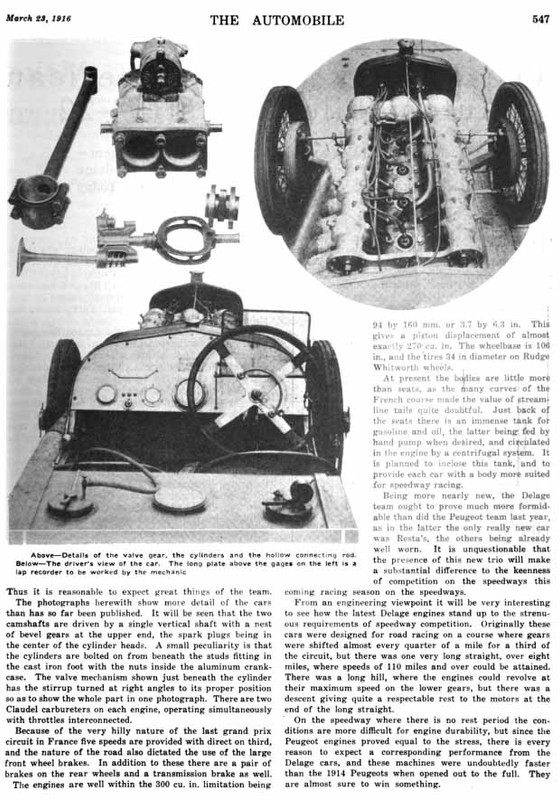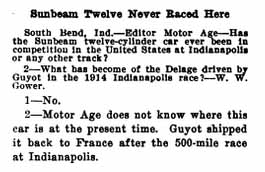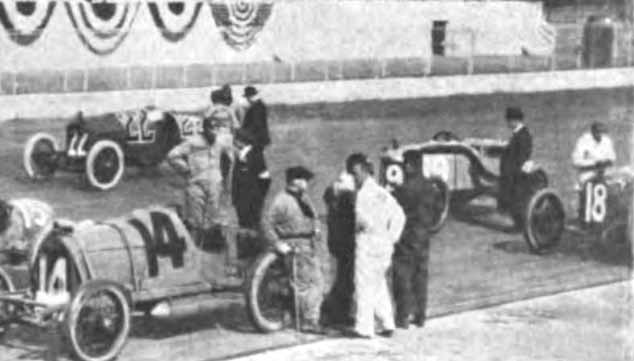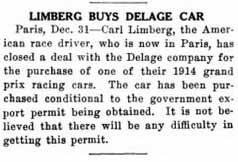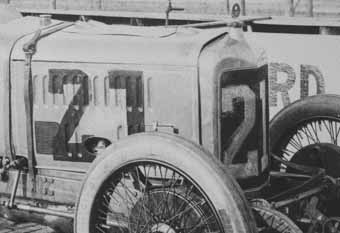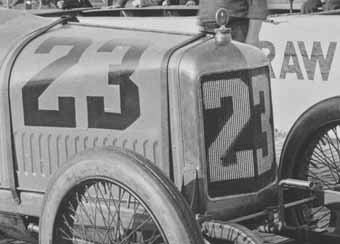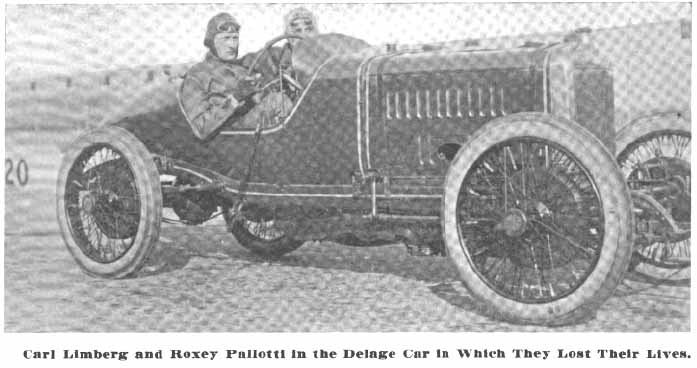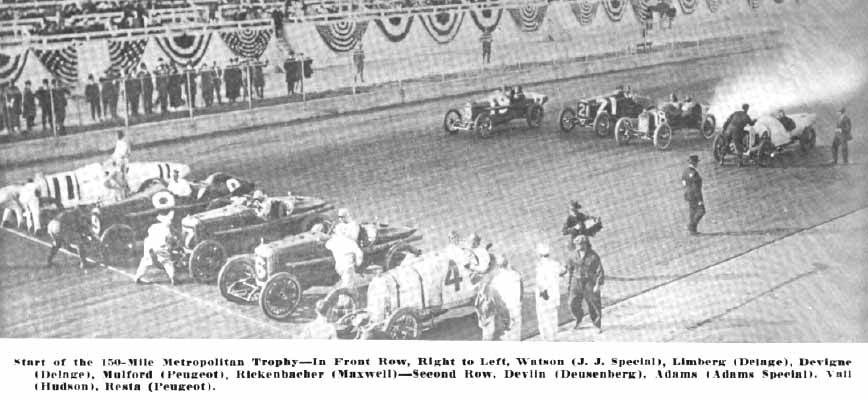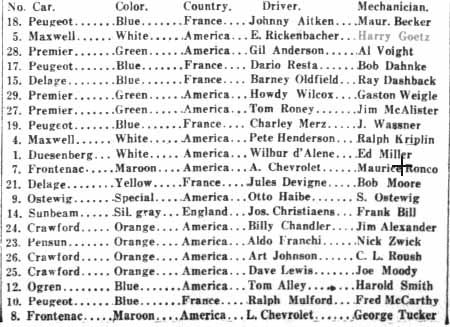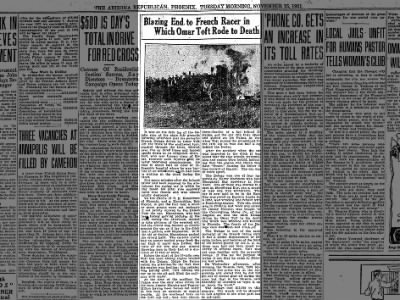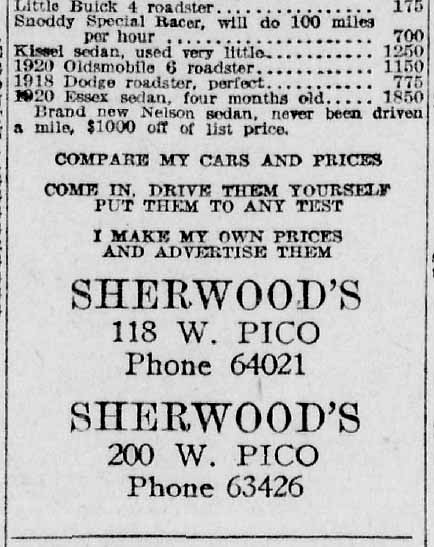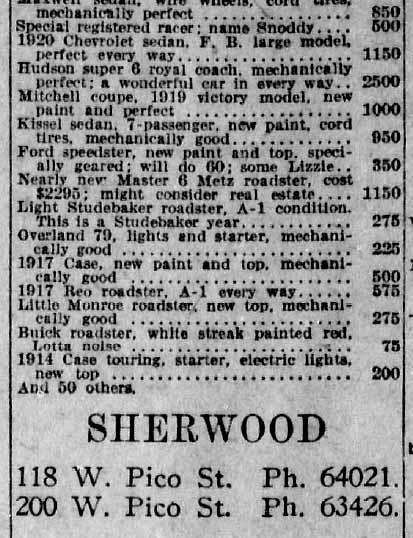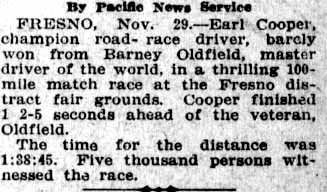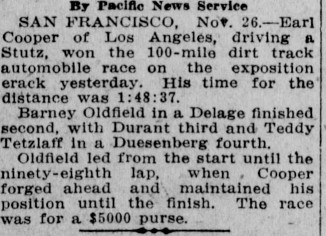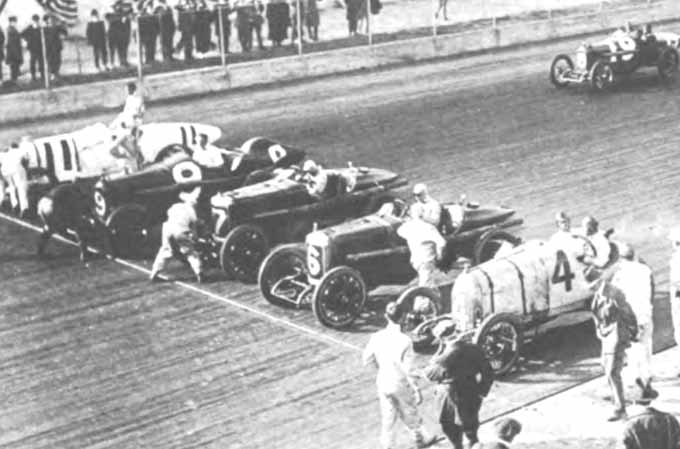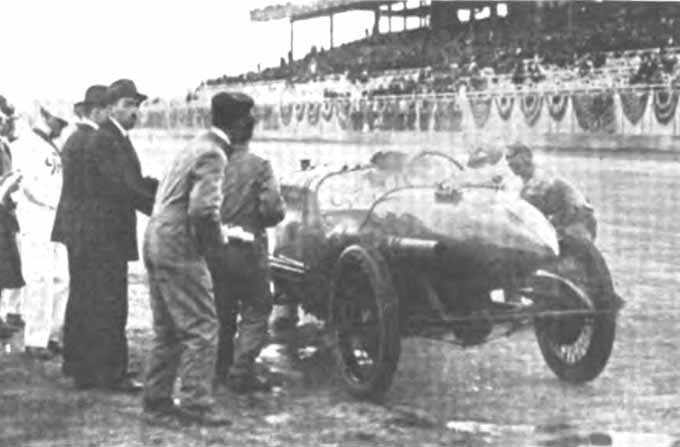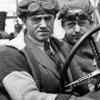I am particularly interested in the Delage contribution to the American racing scene in the years from 1915 to 1922.
My name is Neill Murdoch and the surviving Type S Delage is owned by my father and has been for the last 40 years. I am at present looking more carefully into its history generally and, relevantly to this thread, its history in the USA. This is my first contribution to this forum, so bear with me.
Going back a step to 1914, it seems that there were two Type Y Delages in the USA. One, at least, was modified to suit the 300cid formula which was introduced in 1915, although what was done to it is unclear. It may be that a new block was made to reduce the capacity from 6.2 litres (380.4 cid) to something close to 300cid or perhaps liners were used. I note that Robert Dick in his "Auto Racing Comes of Age" (at p. 146) says that it was a new block and that the cylinder dimensions were 93 x 180. This would give a capacity of 4.89 litres or 298.5 cid. Again, according to Robert this car was raced by Claude Newhouse and then John De Palma, by whom it was crashed at Indianapolis on 23 May 1915 before suffering a mechanical failure in the race itself and being raced subsequently by Louis Chevrolet.
The second Type Y is more of a mystery. It seems to disappear from view after the 1914 Indianapolis race. In any event, the list of A.A.A. Contest Board registrants for the 1916 season (courtesy Don Capps elsewhere in this forum) shows Harry S. Harkness as owner of 6 cars, including three Delages of 274.3 cid (no doubt his Type S cars), the Peusun special, a 21 litre Benz and a 311.6 cid Delage. This is an odd engine size, given that it exceeds the limit of the formula but is markedly less than the original 380.4 cid. Perhaps it was granted some dispensation to run, or perhaps it was in another specification at the time of any race under the formula. It is probably the car raced by Limberg at Sheepshead Bay on 9 October 1915 although I have not found any photographic evidence which would help to identify it. It is clear enough that the three Harkness Type S cars did not arrive in the USA until some time later.
What had happened is that one of the Type S cars had arrived in the USA in the middle of 1915. This car was owned by David Joyce and raced for him by, or given by him to, Barney Oldfield. A colourful account of their conversation in this regard appears in William Nolan's biography of Barney.
How had Joyce come to acquire the first Type S? Letters from Louis Delage to Rene Thomas in early 1915 make it clear that by the middle of February in that year one car had been sold to Thomas at a discounted (as far as Delage was concerned) price of 20,000 francs and that Delage was insistent on being paid before delivering the car. Thomas had also apparently told Paul Bablot (1914 Delage team driver) that a car could be bought and Bablot was asking Delage for the same deal, greatly to the irritation of the latter. Thomas was no doubt well connected in the USA and, perhaps finding himself unable to get there for the 1915 season of racing, probably sold the car on to Joyce without further ado. The other three cars stayed at the Delage factory until bought by Harkness a year or so later.
The Joyce Delage had its first outing with Barney Oldfield at the Maywood Speedway on 2 August 1915. According to the Chicago Examiner (3 August 1915), it lapped at 110.16 mph over 5 laps of the two mile track, which would have made it competitive with any car in the category running at that time, including the Peugeots of Resta and Burman and, had it been operational, the Mercedes of De Palma.
Barney was practising for the World's Challenge Race, a four way contest between he, Resta and Burman in Peugeots and Cooper in a Stutz. Oldfield started on pole from Resta, Cooper and Burman. If the report as to the car's speed was accurate, at this level it was not sustainable and the car's performance in the 100 mile race was disappointing. It ran a dismal fourth throughout and did not finish. Resta won at 102.85 mph over the 100 mile distance, from Cooper in the Stutz with Burman third.
It was the start of a long racing association between Oldfield and the Delage which, while never successful in outright terms, at least provided Barney with a number of finishes reasonably high up in the field and certainly never ended in the catastrophes which beset Harry Harkness and his team when they took to the boards in 1916.
I will return to this story when I can, and welcome in the interim any correction or clarification.
* * * * * * * * * * * * * * *
- The "second" 6,2-litre Type Y (not a Desmo-Delage), driven by Albert Guyot in the 1914 Indy 500, was shipped back to France after the race, and converted for touring use. A photo was even published in the contemporary press - I cannot find it at the moment.
The Automobile, 22 February 1917, page 397: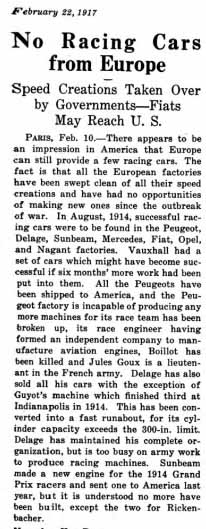
= = = =
Joyce Delage:
In 1915, David Joyce was one of the wealthiest men in the country, on the same level as for example Harry Harkness or Willie Vanderbilt. So there was enough money to buy a Delage. The connection between Joyce and the French factory was made by William Bradley, representative of the Indy Speedway in Europe and European correspondent of the magazines Motor Age and The Automobile. Motor Age was based in Chicago.
= = = =
The Harkness Delages - from The Automobile, 23 March 1916, pages 546 and 547: